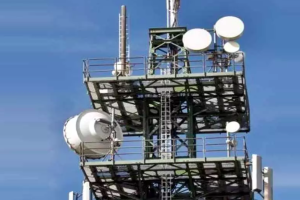Just a day after launching to orbit, SpaceX’s new Crew Dragon capsule automatically docked to a port on the International Space Station this morning — a critical part of its current test flight. This docking maneuver is something the capsule will have to do routinely in the future, when it starts transporting astronauts to and from the ISS.
The Crew Dragon has been in orbit since around 3AM ET Saturday, when it was launched into space on top of a SpaceX Falcon 9 rocket from Kennedy Space Center in Florida. Once it reached orbit, the tip of the gumdrop-shaped capsule pivoted open, exposing the capsule’s docking mechanism underneath. As the Crew Dragon approached the station on Sunday, it then used a series of lasers, sensors, and software to automatically dock this hardware to an available port on the outside of the ISS.
The first @Commercial_Crew mission arrived at the space station today when the @SpaceX #CrewDragon completed soft capture on the Harmony module at 5:51am ET. #LaunchAmerica https://t.co/Bgcgac0O50 pic.twitter.com/KfNFpHxpGx
— Intl. Space Station (@Space_Station) March 3, 2019
SpaceX sent the Crew Dragon to various waypoints outside of the station early Sunday morning, to test the vehicle’s docking capability. Using its onboard thrusters, the capsule periodically approached the ISS and then held its position over the course of two and a half hours. The capsule even backed away at one point to test the spacecraft’s capability of retreating in case of an emergency. Then once the Crew Dragon was about 20 meters away, the final command was sent to the capsule to dock with the ISS. And at 5:51AM ET, the vehicle attached itself onto the docking port. A series of hooks then deployed around the outside of the port to secure the capsule into place.
“We can confirm hard capture is complete,” Anne McClain, NASA astronaut and current ISS crew member, said once the hooks had secured the Crew Dragon. Canadian astronaut David Saint-Jacques, also on the ISS, added: “Congratulations once again to the huge team around the world that makes this possible.”
This is a new type of process for SpaceX, which has never automatically docked a vehicle to the space station before. The company has been launching cargo Dragon capsules to the ISS since May of 2012, but all of those vehicles were berthed; a crew member on board the ISS captures the capsule with a robotic arm on the station and then moves the Dragon to an available port. Now, the new Crew Dragon has shown that it does not need this kind of extensive input from the crew to reach the ISS.
























